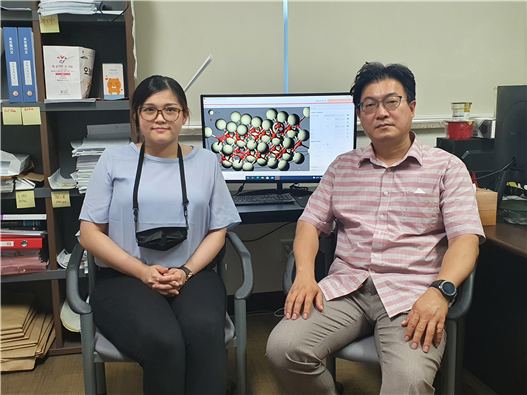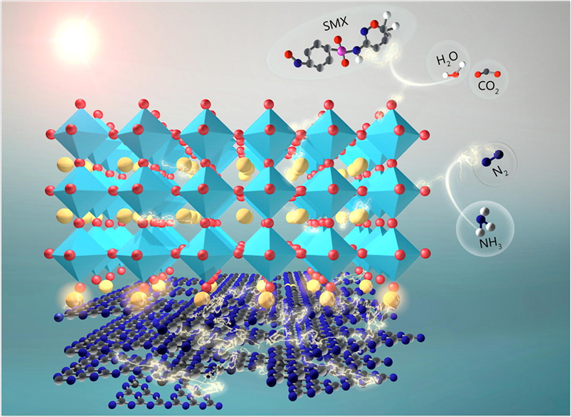Prof. Jang Min’s Research Team Develops a Photocatalytic Synthesis Method for Energy Production...
- admin
- 2021-11-18
- 2448

Choong Choe Earn (left), Prof. Jang Min (right)
Prof. Jang Min's research team (pictured) of the Department of Environmental Engineering, led by research professor of the same department, Choong Choe Earn (first author), combined carbon nitride (PCN) with cerium ferrite (CeFeO3, hereafter CFO) developed a photocatalyst (hereinafter PCN@CFO) synthesis method that can generate ammonia (Ammonia, NH3) under 400 nm LED light irradiation and completely treat microorganic pollutants that are difficult to decompose in water.
For the past several decades, photocatalysts have been attracting attention as a technology for energy production and solving environmental pollution problems have been studied in a wide range of fields such as hydrogen production, nitrogen fixation, pollutant decomposition, and carbon dioxide reduction. The research team developed CFO, a rare earth perovskite material with a relatively low band gap, in 2D structure PCN, which has been attracting attention from many researchers due to its simple fabrication method and low cost, in one easy step. was synthesized by the single-step calcination method of PCN@CFO showed higher photocatalytic activity through the Z-scheme mechanism and the presence of appropriate structural defects
In general, in the case of a photocatalyst, when it receives light, it is excited to generate electrons and holes, and the reaction proceeds as these are directly used or a radical formation reaction occurs. However, since most electrons and holes are stabilized through recombination, the efficiency of the photocatalytic reaction is greatly reduced. In the case of PCN@CFO, the team confirmed that the electrons generated from PCN show a higher electron-hole separation tendency through the Z-scheme pathway like photosynthetic reaction at the interface between two materials (PCN and CFO). In addition, a moderate degree of surface defects in PCN@CFO also inhibited recombination of electrons and holes, thereby improving the photocatalytic performance.
PCN@CFO showed high ammonia production ability under short-wavelength LED irradiation of 400 nm, and effectively removed three trace organic pollutants (Bisphenol A, Atrazine, and Sulfamethoxazole) from water. In the micro-organic pollutant removal experiment, the actual wastewater treatment plant effluent was used as a background solution to confirm the high field applicability. This study suggests a new strategy for a multifunctional photocatalyst capable of energy production and pollutant removal, and the easy manufacturing method of PCN@CFO shows high potential for mass production and field application.
The problem of energy shortage and the treatment of difficult-to-decompose trace organic pollutants is constantly receiving great attention worldwide. This research team is leading various research not only for the production of high efficiency photocatalysts, but also for expanding its field application.

Structure of PCN@CFO
Meanwhile, this study was carried out with the support of the National Research Foundation of Korea, and the research results were published in the online edition of Chemical Engineering Journal (IF: 13.273) on August 8, 2021, a scientific journal. (Paper Title: Interfacial coupling perovskite CeFeO3 on layered graphitic carbon nitride as a multifunctional Z-scheme photocatalyst for boosting nitrogen fixation and organic pollutants demineralization)